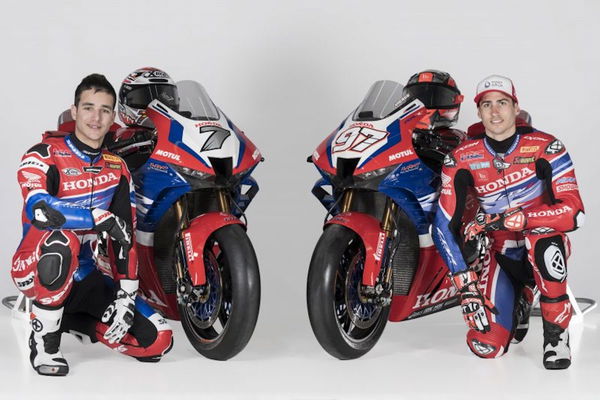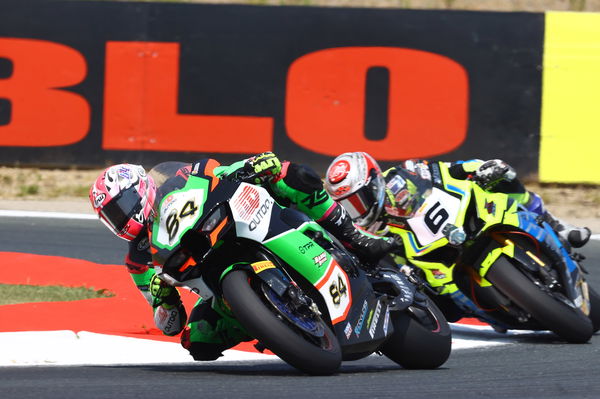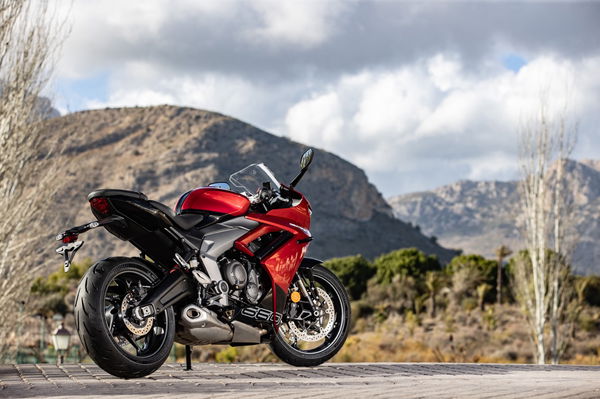Why Iker Lecuona and Xavi Vierge are risks worth taking for Honda WorldSBK
Out with the old, in with the new | Why Iker Lecuona and Xavi Vierge are the ideal blend of youth and experience to stimulate the Honda WorldSBK effort

If Honda’s return to WorldSBK in 2020 was branded the ‘big return’ of Big Red to the series in a full factory capacity, then its 2022 campaign is surely billed as the ‘reboot’.
A manufacturer that has retained a presence on the WorldSBK grid from its inaugural season in 1988 (2003 notwithstanding…), while Honda’s steadfast commitment hasn’t always been mirrored by steadfast attention - instead choosing to delegate its effort to Ten Kate for more than a decade - its latest HRC-helmed bid is now as works as it could possibly be.
Tacking WorldSBK onto its MotoGP set-up in the hope of imitating its premier class form in the production ranks, Honda’s return to the series is certainly high-profile. Its impact since 2020, however, has been rather low profile.
As such, Honda is reconfiguring itself for 2022, which means it is out with the old and in with the new… literally.
Iker Lecuona and Xavi Vierge may be fresh out of the Grand Prix ranks but with a combined age of 46 years (22 and 24 respectively), they certainly add a youthful exuberance missing from the 75 year experience-heavy combination of Alvaro Bautista and Leon Haslam.
It also means team manager Leon Camier will be presiding over two riders that are younger than him this time…
For both riders, they are of course treading a well worn path preceded by dozens of riders who have exited Grand Prix in pursuit of success in WorldSBK. However, what singles them out is they are doing so at a relatively young age, Lecuona and Vierge victims of MotoGP’s ruthless rider market to be out of employment before their likely peak.
Cynics will suggest the all-Spanish line-up was stage managed by Dorna - a charge Honda firmly dismisses - but more likely the manufacturer has happened upon two noteworthy riders still on the upswing in career terms.
For Lecuona, his early exit matches his swift entry into the premier class, the Spaniard unexpectedly promoted to a Tech 3 KTM MotoGP ride in 2020 in the wake of Johann Zarco’s premature departure from the Austrian ranks.
One of the youngest riders to have ever started a MotoGP race, the promotion in some ways did Lecuona few favours, his inexperience and non-KTM programme status alongside the favoured Brad Binder and Miguel Oliveira making it difficult for him to snare some spotlight.
There were highlights - a top six finish in the wet in Austria being the shiniest - but despite proving a match for his team-mates towards the end of 2021, it appears his MotoGP chance has come and gone at the age of 21.
It’s what makes his transition to WorldSBK such an intriguing prospect. While the series has developed a reputation as a ‘last hurrah’ of sorts for MotoGP-alumni in the autumn of their careers, Lecuona is younger than each of his factory-bike contemporaries.
It’s a similar story for Vierge, who was at one time being touted for a satellite Yamaha ride through his association with Razlan Razali, only to watch his hopes dwindle with the team’s cash reserves in a post-Petronas landscape.
Even so, Vierge’s fortunes will potentially be viewed even more carefully than Lecuona’s, for he is making the less familiar switch from Moto2 to WorldSBK. Numerous former rivals have made for the production-ranks in recent years - albeit in WorldSSP - with Dominique Aegerter, Steve Odendaal and Andrea Locatelli among those to make it a substantial success, so a strong account by Vierge could convince teams to add Moto2 riders to their wish-lists going forward.

Why Lecuona and Vierge are right for Honda WorldSBK
As an esteemed manufacturer facing some pressure to pick up the pace (and better results), hiring two rookies appears like a risk on paper.
It’s also the antithesis of its original approach to lure Alvaro Bautista (reportedly on the biggest salary on the grid) and the ultra-experienced Leon Haslam into its midst. Both were hampered for different reasons - Bautista couldn’t get along with the V4 to inline-four, Haslam had the lion’s share of the set-up work - but both were also restricted by the CBR1000RR-R hitting its developmental glass ceiling very early.
Quick in a straight line but too stiff in the corners, Honda’s reboot involves more than just the riders for 2022. A revised roadgoing model has been tweaked to loosen it up while a switch to Nissin brakes and Showa suspension also indicates a major change of philosophy for this year’s effort.
The early signs are promising with Lecuona and Vierge proving competitive in testing so far, even if both are coy as to where that will place them on the grid once racing gets underway.
Regardless, Honda sees both riders as an investment and a way to integrate the change in riding style to suit the Fireblade, rather than the other way around, with Camier at pains to assure that both riders will be given time to impress.
“We are super impressed with both riders, the speed straight away was really impressive,” he said. “Considering how young they are - compared to the riders before - their feedback was very good. For us this is really important, moving forward and developing a new product, it is very sought after.
“Before we signed them, we did as much homework on the riders as we could but until you get to the first test, you don’t know how it will go but first impressions are really good.
“It will take time for them, there is a lot to learn, so we are not expecting them to be up to speed straight away but this is something we are expecting. This is an investment for the future.”
It doesn’t hurt that both riders evidently have a point to prove, a hunger that is surely worth the odd tenth here or there.
They are also positive signings for WorldSBK in general. At a time when Toprak Razgatlioglu is being touted for an increasingly rare direct move from production-to-prototype, having Lecuona and Vierge present WorldSBK as a lucrative alternative option at such a youthful stage in a rider’s career could have the effect of shaking up the grid in the next couple of years.
This will depend, however, on their results this season and at this stage it would be foolish to suggest Honda will find itself duking it out for wins with Kawasaki and Yamaha straight away. Then again, Lecuona and Vierge have a relatively modest benchmark - Bautista’s three podiums in two seasons - to aim for.
With this in mind and considering their eye-catching CV relative to their youth, provided Honda is willing to give it to them, time is very much on their side.











